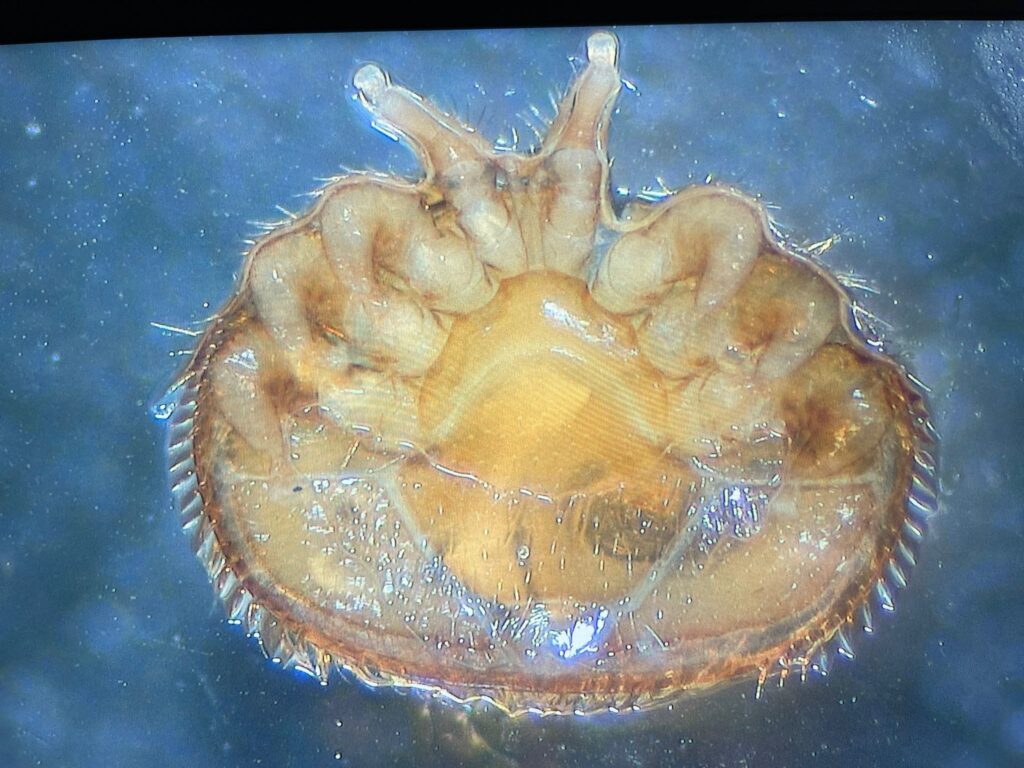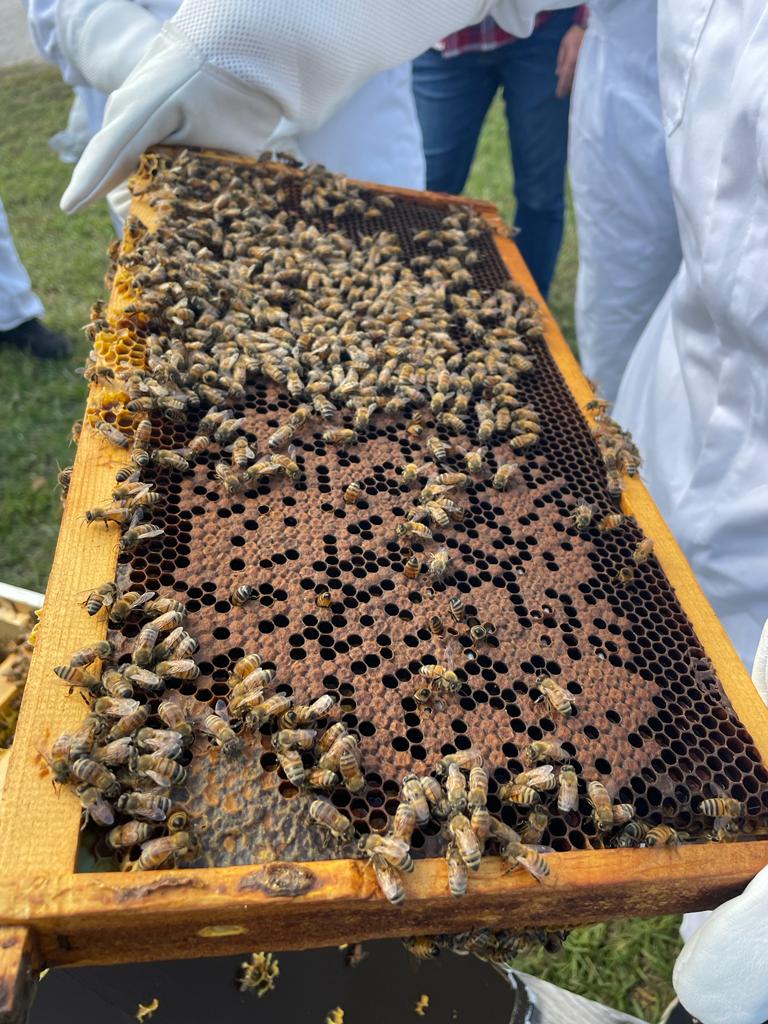by LUIS RODRIGUEZ ROSADO, UF/IFAS Extension Polk County


What Happens to Honey Bees During Winter?
During winter, the lack of resources could represent a real challenge to the honey bees, not to mention that low temperatures could affect bee activity. Honey bees are more comfortable in temperatures of about 75℉ to 95℉. When temperature drops below 50℉, honey bees tend to be less active. The bees go back to their hive to increase the temperature inside the hive to maintain it close to 96℉. Even though Central Florida has warm temperatures during most of the year, it does have a mild winter. Because of this, Central Florida beekeepers must maintain good management practices during winter to help the bees survive to reach the spring season.
Why Is the Health of the Colony Important During Winter?
A healthy honey bee colony is a colony that has no or low presence of pests and diseases, has a good amount of bees, and has enough resources such as pollen and nectar inside the hive. All of these increase the survival of a bee colony, especially during winter. Providing feed (nectar and pollen) when needed and monitoring for pests and diseases are good management practices that help beekeepers maintain healthy colonies capable of surviving the winter season.
Why Is Feeding the Bees Important?
Not many flowers bloom during winter. This means that nectar and pollen will be less available for honey bees. Nectar is the honey bees’ energy source, while pollen is their protein source. If nectar flow is high, beekeepers do not need to provide any feed to their bees because they will forage for nectar and pollen found on flowers. On the other hand, during winter, when nectar flow is low, these resources could be scarce and in the worst scenarios, honey bee colonies could starve. Beekeepers should only feed the bees when needed to allow them to get the resources they lack in the environment, which is exactly what happens during winter. To feed bees, you can use a solution of 2-parts sugar and 1 part water by volume. Also, you can add pollen substitutes like pollen patties. (For more information about pollen read the Ask IFAS publication The Benefit of Pollen to Honey Bees at https://edis.ifas.ufl.edu/publication/IN868.)
Beekeepers can also incorporate plants that bloom during winter as a nectar and pollen source to attract bees to their apiaries. Examples of native Florida plants that bloom during winter and also attract bees are Cherry-Laurel (Prunus caroliniana) and Leavenworth’s tickseed (Coreopsis leavenworthii). Examples of crops that attract bees and bloom during winter are strawberries and some leafy greens. Spanish needles (Bidens alba) are considered a weed for many, but these plants are a good source of nectar for bees. Although they normally bloom in March and October you can still find some of them in bloom during November and December.
Why Is It Important to Monitor Pests and Diseases Within the Hive?
Varroa Destructor, also known as Varroa Mites, is the number 1 pest of honey bees. They can cause many problems for honey bees when proper control is not achieved, including the loss of a colony. Even though Varroa Mites populations have already peaked by wintertime, it is still important for the beekeeper to monitor this pest and treat it when needed. If the population of mites is 3% or more compared to the population of bees, the beekeeper should treat their hive to ensure its survival. For example, in a 300-size sample of bees, if you find nine mites it corresponds to 3% of the total bee population, meaning treatment is recommended. The treatments available are Apiguard, Apistan, Apivar, Hopguard, Mite Away, and Amitraz. Always follow label instructions when applying pesticides and ensure you have the proper equipment and license (if needed) depending on the pesticide treatment you use. You can check mite populations by performing a sugar shake or an alcohol wash. (For more information about monitoring for varroa mites, read the Ask IFAS publication How to quantify Varroa Destructor in Honey Bees (Apis Mellifera L.) Colonies at https://edis.ifas.ufl.edu/publication/IN1257).
Nosema is a pathogen spread by spores that can affect bee nutrition. If bees are well fed, Nosema problems are reduced, but when colonies lack resources, Nosema can become a problem. The same way beekeepers need to monitor for Varroa Mites they also need to monitor for Nosema spores, especially during winter. (One million spores per bee is considered a high count.) For information about how to monitor Nosema read the Ask IFAS publication How to Quantify Nosema Spores Infection Rate in a Honey Bee Colony at https://edis.ifas.ufl.edu/publication/in1123.
Beekeeper Responsibility
Honey bees may lack resources such as pollen and nectar during the wintertime because of the lack of flower blooms during the season. It is the responsibility of a beekeeper to provide the necessary feed and minimize pest problems during this time of the year to increase the survival of the colony.
For more information about honey bees and beekeeping, contact your local UF/IFAS Extension Agent:
Luis O. Rodriguez Rosado, Extension Agent I
Small Farms and Pesticide Education
UF/IFAS Extension Polk County
863-519-1049

